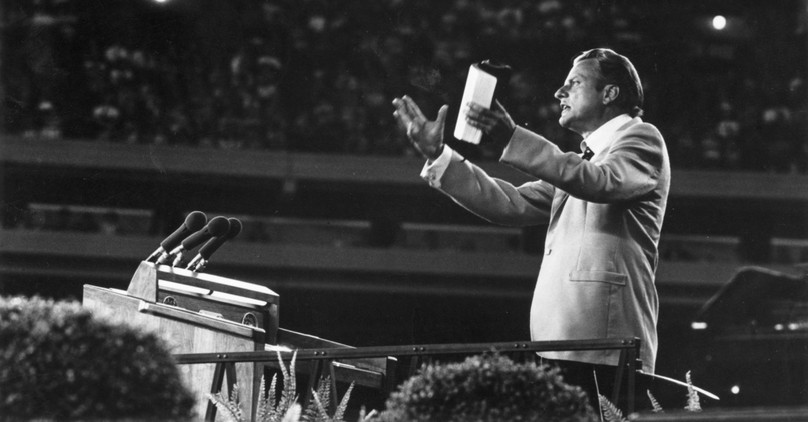
Six years after the famous evangelist’s passing, a statue of Billy Graham will be unveiled in the U.S. Capitol next week as part of a ceremony and honor bestowed upon few Americans. Each state is allowed two statues as part of the capitol’s “National Statuary Hall Collection,” and in 2015, the North Carolina General Assembly voted to replace a statue of former governor Charles Brantley Aycock, known for his white supremacist views, with a new one of Graham.
Graham died in 2018 at age 99 and served as an evangelist for nearly 60 years, preaching the gospel to more than 215 million people in some 185 countries around the world. Other statues in the collection include those of George Washington, Dwight D. Eisenhower, Ronald Reagan, Amelia Earhart and Helen Keller.
“This is a great honor and my father would be humbled and grateful,” said Franklin Graham, president and CEO of the Billy Graham Evangelistic Association, and Billy Graham’s son. “At the same time, he would not want the attention on himself but on God’s Son, the Lord Jesus Christ.”
The base of the statue includes two verses: John 3:16 and John 14:6. The statue is seven feet tall. It was sculpted by Charlotte-based artist Chas Fagan and “depicts Mr. Graham pointing to an open Bible,” according to a news release from the Billy Graham Evangelistic Association. It will be unveiled May 16 in a private ceremony in the capitol with remarks by Franklin Graham, House Speaker Mike Johnson and music by Michael W. Smith. North Carolina’s legislators on both the state and national level led the effort to have Graham’s statue in the capitol.
“The legacy of Rev. Billy Graham is based on his simple message of forgiveness based on John 3:16,” said Sen. Ted Budd (N.C). “His lifelong commitment to preaching the Gospel, his fight for civil rights, his opposition to communism, and his spiritual guidance provided hope to hundreds of millions. His likeness should stand in the U.S. Capitol forever.”
National Statuary Hall dates back to the mid-1800s when Congress passed a law in 1864 authorizing the president to “invite each and all the States to provide and furnish statues, in marble or bronze, not exceeding two in number for each State, of deceased persons” who are known for their “historic renown or for distinguished civic or military services.” Although the statues initially were placed only within National Statuary Hall -- a large circular room within the capitol -- they outgrew the room such that Congress, in 1933, “authorized the display of the statues throughout the building for both aesthetic and structural reasons,” according to the hall’s website.
Photo credit: ©Getty Images/Keystone/Stringer
Michael Foust has covered the intersection of faith and news for 20 years. His stories have appeared in Baptist Press, Christianity Today, The Christian Post, the Leaf-Chronicle, the Toronto Star and the Knoxville News-Sentinel.
Listen to Michael's Podcast! He is the host of Crosswalk Talk, a podcast where he talks with Christian movie stars, musicians, directors, and more. Hear how famous Christian figures keep their faith a priority in Hollywood and discover the best Christian movies, books, television, and other entertainment. You can find Crosswalk Talk on LifeAudio.com, or subscribe on Apple or Spotify so you never miss an interview that will be sure to encourage your faith.








